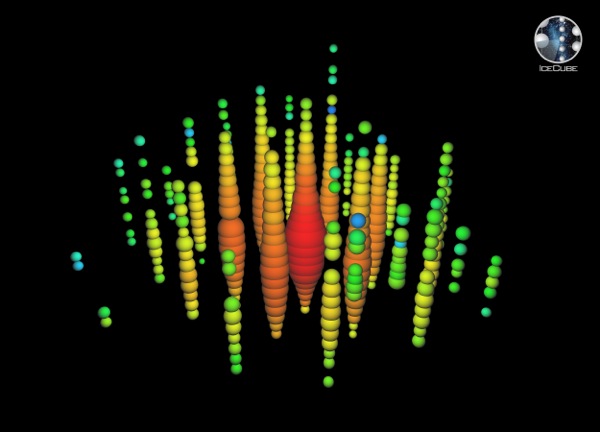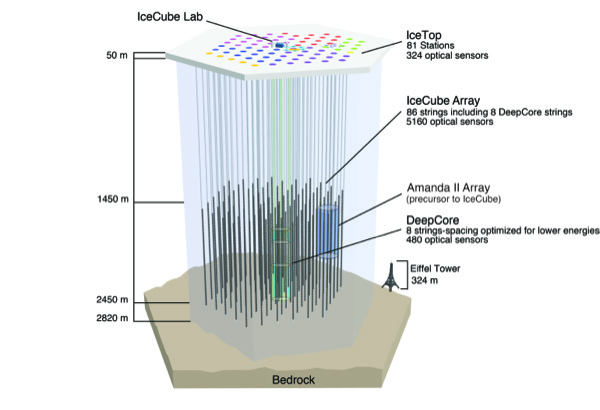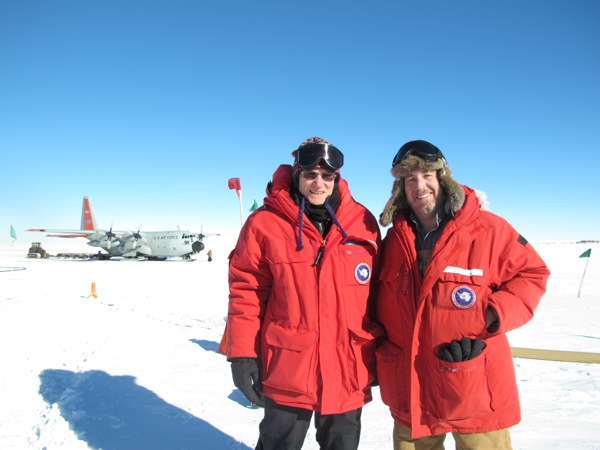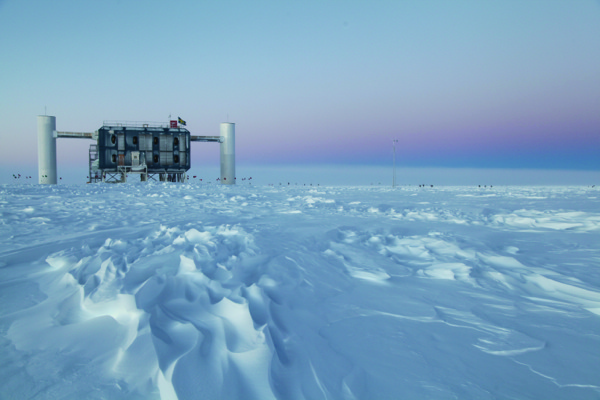


A cosmic advance
Cosmic finding ushers in 'new age of astronomy'
2 p.m., Nov. 21, 2013--Neutrinos can zip right through your body, the walls of your house, entire planets, even emerging from near the surface of fascinating and frightening black holes.
And now, an international scientific collaboration that includes researchers from the University of Delaware has taken an astronomical step forward in unmasking the origins of some of these high-energy particles, the so-called “messengers of the universe.”
Research Stories
Chronic wounds
Prof. Heck's legacy
Using the IceCube Neutrino Observatory, a novel telescope built with the support of the National Science Foundation over a mile deep in the Antarctic ice, the collaboration has observed 28 very high-energy particle events. These observations constitute the first solid evidence of neutrinos coming from “cosmic accelerators” — potentially such sources as exploding stars or accreting black holes. The research is the cover story of the Nov. 22 edition of Science.
“This is the first indication of very high-energy neutrinos coming from outside our solar system,” says Francis Halzen, principal investigator of IceCube from the University of Wisconsin–Madison. “This is the dawn of a new age of astronomy.”
The scientific team is working now to pinpoint where these neutrinos are coming from outside our solar system, according to Tom Gaisser, the Martin A. Pomerantz Chair of Physics and Astronomy at the University of Delaware.
Gaisser leads a team of researchers in UD’s Department of Physics and Astronomy who have been instrumental in constructing and maintaining the IceCube Observatory’s surface array of detectors known as “IceTop” during the past decade. These detectors help scientists to rule out the interference caused by neutrinos produced locally in our atmosphere and to focus instead on more energetic particles produced light years away from Earth, possibly even in the radiation field leftover from the Big Bang, which most astronomers believe formed the universe.
“The universe is transparent to neutrinos,” Gaisser explains. “Are they remnants from supernovae, did they emanate from gamma ray bursts, or were they accelerated from an accreting black hole? We do not have conclusive information about their origin yet.”
According to Gaisser, the answer will depend on the number of neutrino events captured by IceCube, from which geometric calculations can be made to trace the high-energy neutrinos to specific astronomical sources.
Billions of neutrinos pass through every square inch of Earth every second, rarely interacting with matter because they have no electrical charge. The vast majority of these subatomic particles originate either in the sun or in Earth’s atmosphere. Far rarer are neutrinos from the outer reaches of our galaxy or beyond, which have long been theorized to provide insights into the powerful cosmic objects from which they originate: supernovae, black holes, pulsars, active galactic nuclei and other extreme extragalactic phenomena.
IceCube was designed to accomplish two major scientific goals: measure the flux, or rate, of high-energy neutrinos and try to identify some of their sources.
The analysis presented in Science reveals the first high-energy neutrino flux ever observed, a highly statistically significant signal that meets expectations for neutrinos originating in cosmic accelerators.
The 28 high-energy events were found in data collected by IceCube from May 2010 to May 2012 and analyzed for neutrino events exceeding 50 teraelectronvolts (TeV) coming from anywhere in the sky. The events cannot be explained by other neutrino fluxes nor by other high-energy events, such as muons, which are charged particles produced by the interaction of cosmic rays in the atmosphere.
“This is an important observation,” Gaisser says. “It means that somewhere in the universe, there are high-intensity sources near a ‘central engine,’ and lots of collisions are occurring to produce the neutrinos.”
IceCube comprises 5,160 digital optical modules suspended like beads on a necklace along 86 strings embedded in a cubic kilometer of ice beneath the South Pole. An additional 324 optical modules are frozen inside 162 IceTop tanks on the surface. The observatory detects neutrinos through the tiny flashes of blue light, called Cherenkov light, produced when these tiny particles interact in the ice.
Although IceCube is designed to do basic science, Gaisser says it also has yielded an important application — a GPS-based calibration system that tells the time accurately within three nanoseconds across all the observatory’s sensors.
The IceCube collaboration includes 250 physicists and engineers from the U.S., Germany, Sweden, Belgium, Switzerland, Japan, Canada, New Zealand, Australia, the United Kingdom and Korea. The University of Delaware is one of 16 U.S. universities involved in the effort.
For a PowerPoint presentation on the project, click here.
Article by Tracey Bryant with additional information from the IceCube Collaboration, University of Wisconsin











